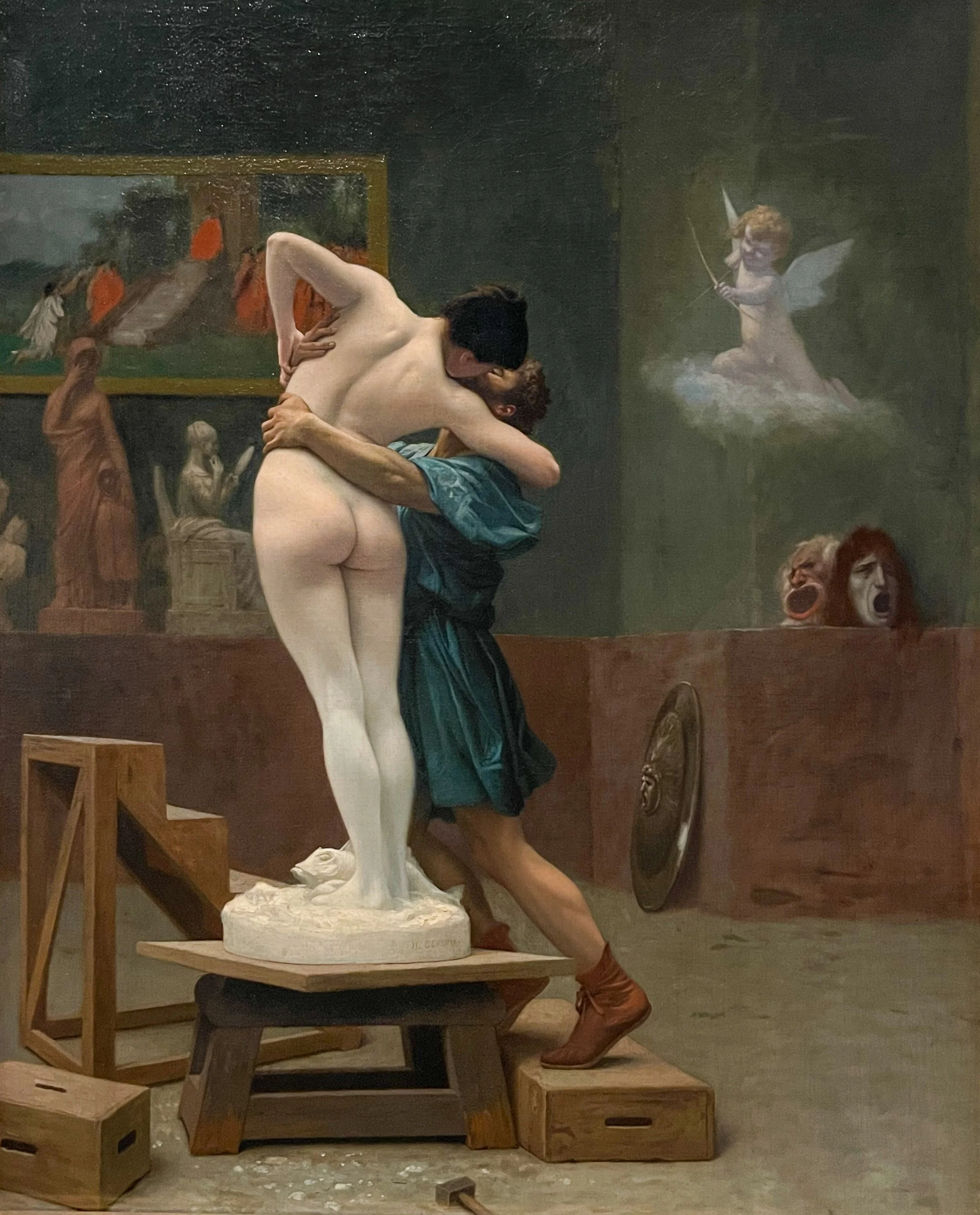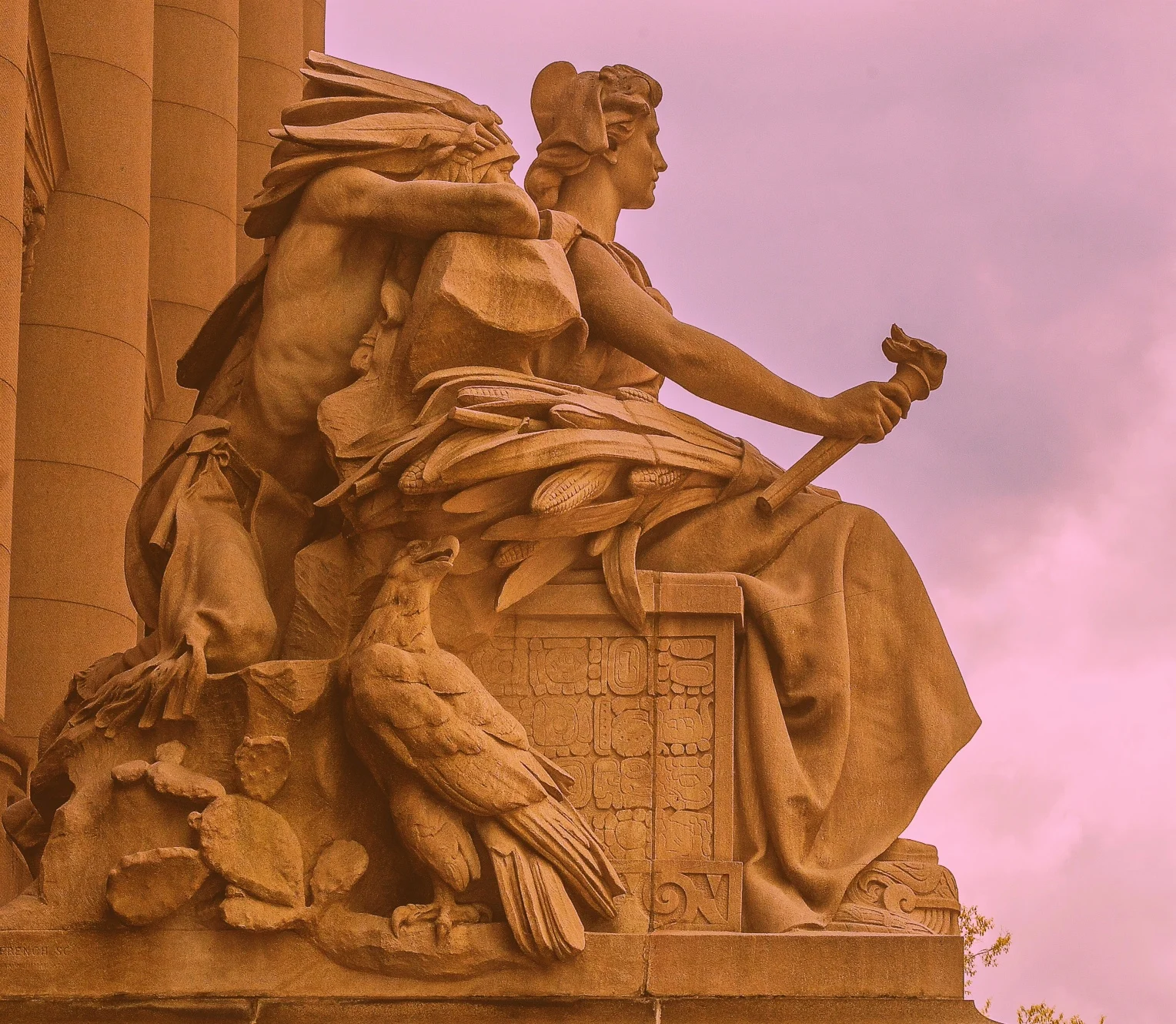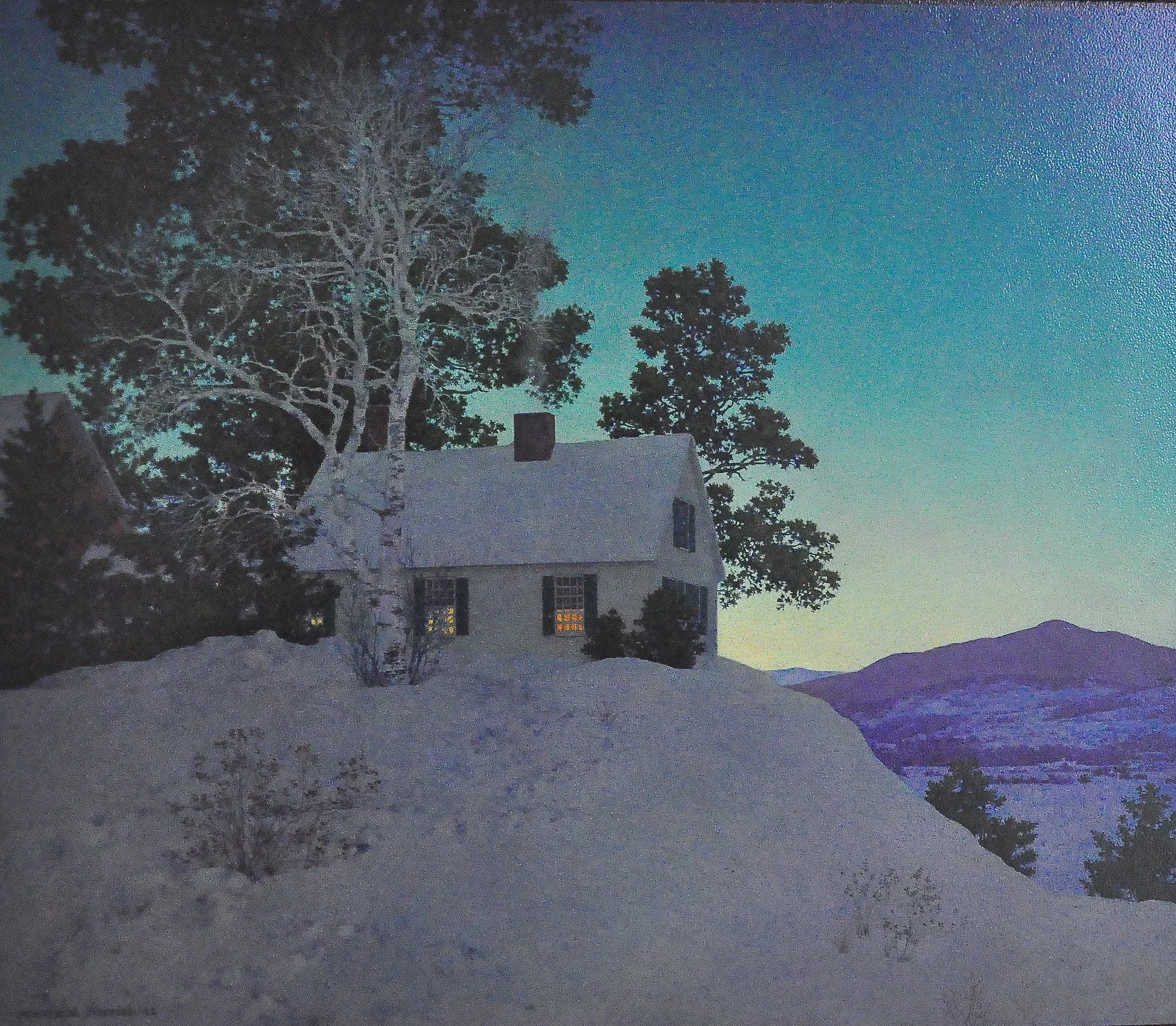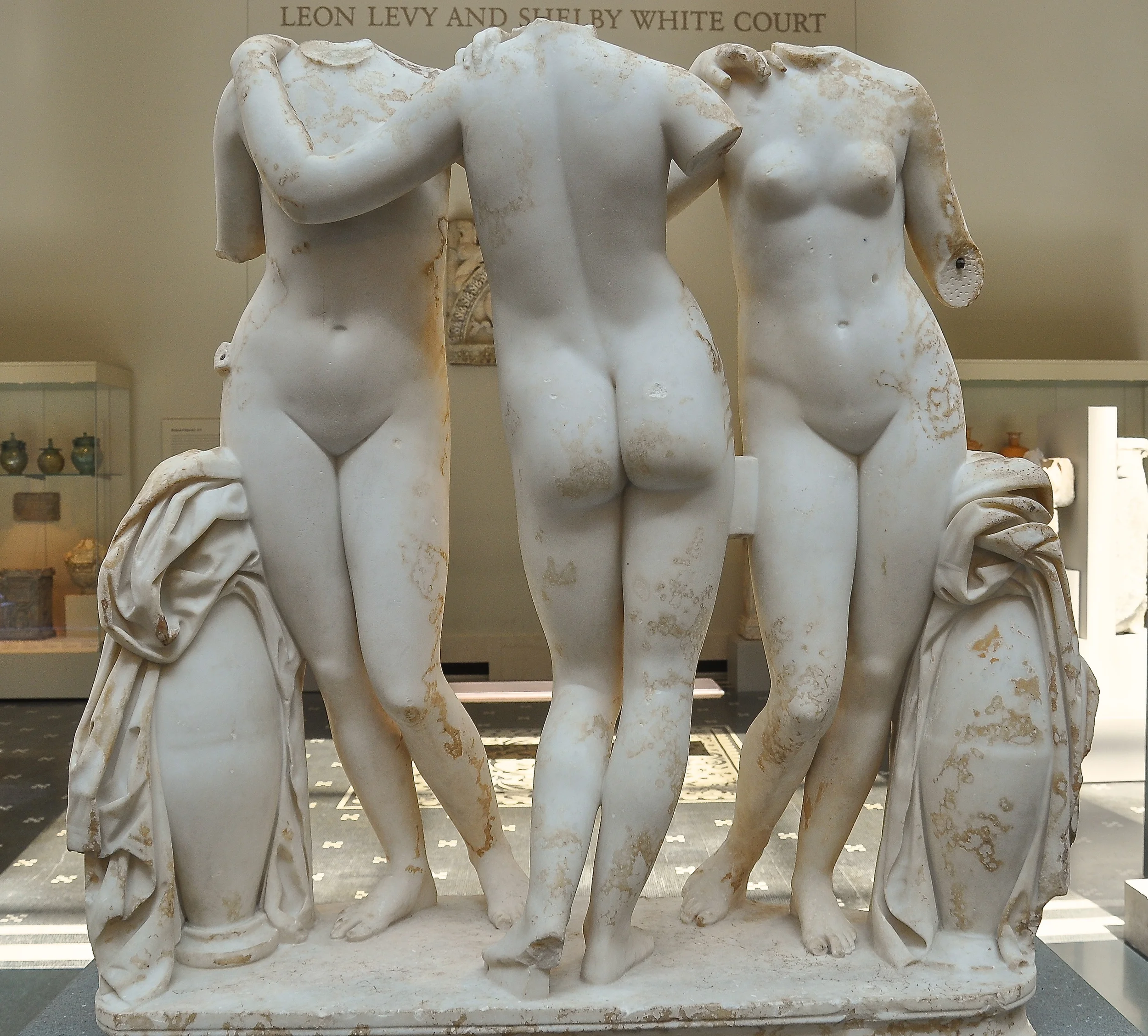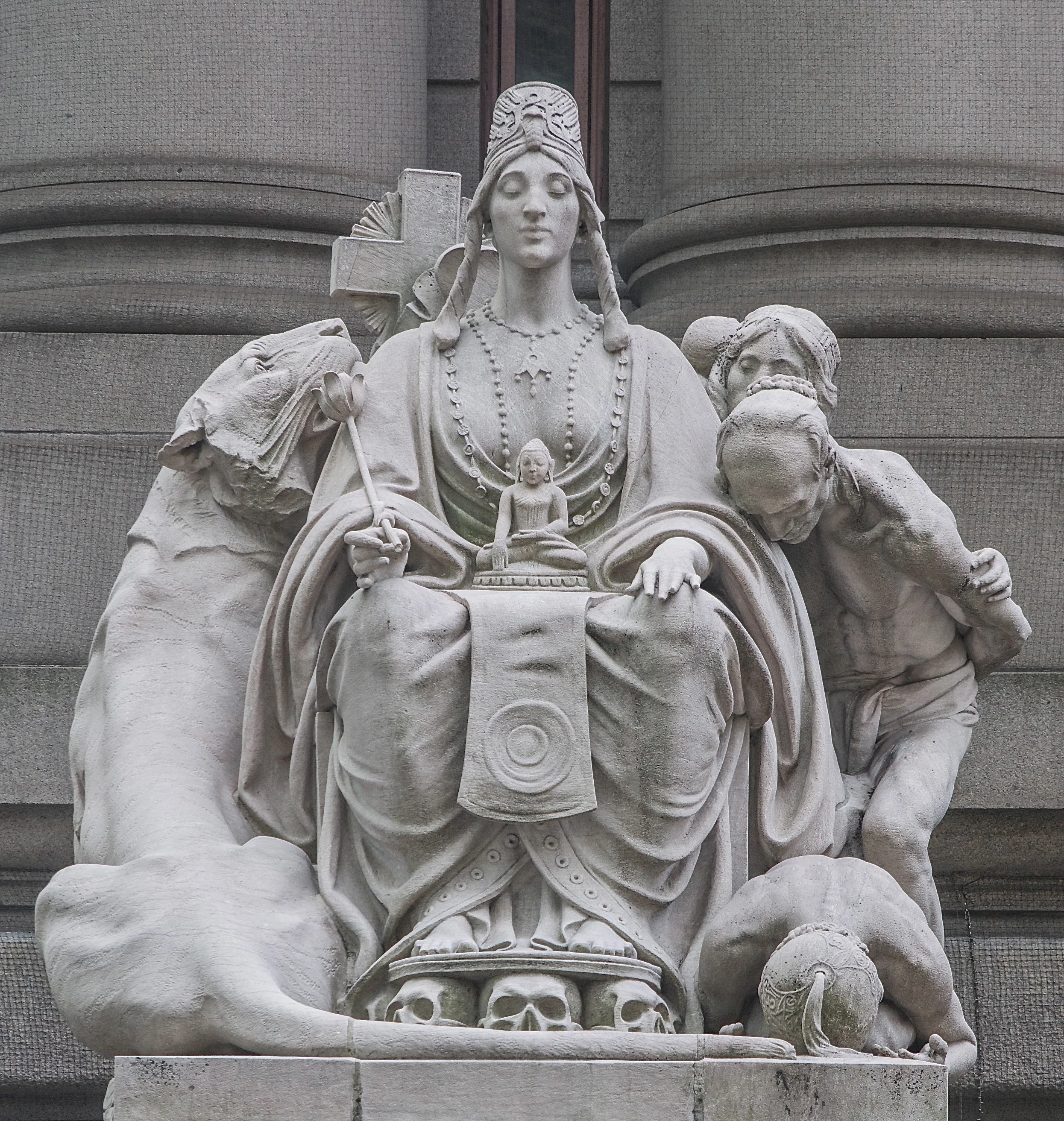![Sherman Monument (Saint-Gaudins)]()
Sherman Monument (Saint-Gaudins)
![Portrait of a Young Man, Rembrandt]()
Portrait of a Young Man, Rembrandt I was in my late teens when I started to really appreciate art. I would buy art books, cut out the paintings that caught my eye, and hang them alongside posters of rock stars on my bedroom walls. Rembrandt’s “Portrait of a Young Man” (circa 1639) was among those prints.Lighting is a feature of painting that I enjoy most. Rembrandt was a master of chiaroscuro, a technique emphasizing contrast between light and shade, and this work is exemplary.So, while I was roaming the rooms at the Uffizi Gallery in Florence, it was a great pleasure to unexpectedly come across this painting that brought me back to the bedroom of my youth. I was equally pleased to find that this work, which art scholars once believed was a self-portrait, appears more beautiful in the flesh.The painting has another feature I hold in high regard: clarity. It is so obviously more clear in person than it appears in photos (my image here included), that I felt as if I could reach over the panting’s frame and touch the pelt of the subject’s coat. It’s an incredibly realistic portrait and my favorite Rembrandt.
![Three Dancing Maidens by Schott]()
Three Dancing Maidens by Schott Walter Schott’s Three Dancing Maidens is a bronze sculpture that serves as the centerpiece of Untermyer Fountain in Conservatory Garden in Central Park.
![Flaming June by Leighton]()
Flaming June by Leighton Flaming June, an oil on canvas painted by Frederic Leighton in 1895. I sat for a few minutes just to gaze at the slumbering beauty dressed in sheer orange draperies. To connect further with the painting, I practiced art analysis techniques that I learned from @LucTraver’s book “Stories in Paint.” Leighton said the inspiration for his painting was the posture of a tired model, according to the exhibit label.“Her skin flushed by the sun, she is transformed into the personification of summer heat,” it reads.Flaming June is temporarily on loan, alongside another of Leighton’s paintings, while their permanent home, Museo de Arte de Ponce in Puerto Rico, undergoes renovations.The equally impressive frame is a replica based on an original design by Leighton.
![Venus de Milo]()
Venus de MiloThe Venus de Milo is among the most celebrated sculptures from the classical world. Discovered in 1820 on the Greek island of Melos, the statue of the famously armless female figure is also one of the most visited artworks at the Louvre in Paris, rivaled by the Mona Lisa and Winged Victory of Samothrace.She was created by an unknown sculptor using two marble blocks that were carved separately, one from her feet to hips, the other her nude torso and head. This technique, reads a sign accompanying the statue at the Louvre, “was typical of sculptors created in workshops in Rhodes and in the Cyclades at the end of the Hellenistic era (330-30 BC) when the Romans conquered Greece.”The sculpture was found in pieces and without its arms, acquired by Marquis de Rivière, France’s ambassador of Greece, and reconstructed before he offered it to King Louis XVIII. The monarch donated it to the Louvre in 1821.Interestingly, the subject’s identity is vexing mainly because of her lost arms. Classical artists often revealed the identity of their gods and goddesses by objects or natural elements that they held in their hands. While scholars today generally believe the Venus de Milo represents Aphrodite, the Greek goddess of Love (whose Roman counterpart is Venus), others contend she represents Amphitrite, the sea-goddess that was especially revered in Milo (previously called Melos). From the Louvre’s website:“Is she the sea goddess Amphitrite, particularly worshipped on the island of Melos? Or is she Aphrodite, the goddess of beauty, as might be suggested by her sensual, half-naked body? This second argument, and the jewellery she once wore, tipped the scales in favour of Aphrodite… Another possible clue was found near the statue: a hand holding an apple – an attribute of Aphrodite – carved from the same Parian marble.”
![Sign, Metropolitan Museum of Art: “On May 12, 1863, in the company of the journalist and explorer Fitz Hugh Ludlow, Bierstadt departed on his second trip to the West. The two men camped in California's Yosemite Valley in August, probably inspired]()
Sign, Metropolitan Museum of Art: “On May 12, 1863, in the company of the journalist and explorer Fitz Hugh Ludlow, Bierstadt departed on his second trip to the West. The two men camped in California's Yosemite Valley in August, probably inspired in their choice of destination by the stereoscopic photographs of Carleton E. Wat-kins, who had recorded the valley's magnificent scenery under various atmospheric conditions.“From the many studies Bierstadt made during the trip, he painted several large works back in New York. In this canvas, as in many by him, monumen-tal, jagged peaks dwarf the figures seen in the flat, carefully detailed foreground.”
![The Death of Socrates by David]()
The Death of Socrates by David
![Lincoln Memorial]()
Lincoln Memorial The Lincoln Memorial in Washington, D.C. honors Abraham Lincoln, the 16th president of the United States. The statue of Lincoln within the memorial’s neoclassical-style temple was designed by American sculptor Daniel Chester French and carved by the Piccirilli Brothers. The memorial was dedicated on May 30, 1922.(Photo: © Joseph Kellard/kellardmedia.com)
![This painting by an unidentified artist is dated from roughly 90 to 120 A.D, according to the Metropolitan Museum of Art, which ownes and titles it “Portrait of a Young Woman in Red.”
The portrait was probably founded among hundreds of others like]()
This painting by an unidentified artist is dated from roughly 90 to 120 A.D, according to the Metropolitan Museum of Art, which ownes and titles it “Portrait of a Young Woman in Red.”
The portrait was probably founded among hundreds of others like it in Egypt, mostly likely at Faiyum, an area that Rome ruled starting around 30 B.C. In her book Innovators in Painting, art writer @diannedurante notes that these portraits, painted on wood panels at about 15 inches in height, were “attached to the outside of mummies.”Although each portrait possesses unique combinations of physical features, such as their hairstyle and skin tone, they all share common qualities. All portraits are shown in a three-quarter view, only display one ear, have large eyes, small mouths, and feature highlights and shadows that consistently fall on the forehead, nose and cheeks, Durante writes.
![A profile perspective of Greek busts lined up together at the Metropolitan Museum of Art. My photo focuses on a Hellenistic female bust in the middle that likely represents Aphrodite, “as it resembles other depictions of the goddess,” writes the Met]()
A profile perspective of Greek busts lined up together at the Metropolitan Museum of Art. My photo focuses on a Hellenistic female bust in the middle that likely represents Aphrodite, “as it resembles other depictions of the goddess,” writes the Met, which dates the work to the second and first centuries B.C. The bust consists of onyx marble, also called calcite alabaster.
![Romeo and Juliet Milton by sculptor Milton Hebald at the Delacorte Theater in Central Park.]()
Romeo and Juliet Milton by sculptor Milton Hebald at the Delacorte Theater in Central Park.
![Washington Crossing the Delaware by Leutze]()
Washington Crossing the Delaware by Leutze Washington Crossing the Delaware by LeutzeMetropolitan Museum of Art.Photo © Joseph Kellard/kellardmedia.com
![Joan of Arc by Huntington]()
Joan of Arc by Huntington Photo © Joseph Kellard/kellardmedia.com
![Andromeda by French]()
Andromeda by French
![The Weeders by Breton]()
The Weeders by BretonThe Weeders by Breton
![Mourning Victory by French]()
Mourning Victory by French Mourning Victory by Daniel Chester French.
![During my first trip to the National Portrait Gallery in Washington D.C. on Sunday, I had an impromptu date with a portrait painting, “Elizabeth Winthrop Chanler (Mrs. John Jay Chapman),” by John Singer Sargent. As I walked down the long hallway]()
During my first trip to the National Portrait Gallery in Washington D.C. on Sunday, I had an impromptu date with a portrait painting, “Elizabeth Winthrop Chanler (Mrs. John Jay Chapman),” by John Singer Sargent.As I walked down the long hallway on the museum's second floor, I turned into a warmly lit room—and there she was, staring wide-eyed at me. She sat on a pink couch and leaned on colorful pillows, her ring-adorned hands intertwined, as she suspend in a gold frame on a crimson wall. The room had a padded bench positioned before her, where I sat enchanted by her presence and returned her stare for several minutes.A portraitist famous for his work with female socialites, Sargent painted the 26-year-old heiress’ portrait in his studio while she was in London to attend her brother’s wedding in 1893. The artist described her as having “the face of the Madonna and the eyes of a child.”Chanler’s mother came from the wealthy Astor family and her father was a descendent of Peter Stuyvesant, the last director general of New Amsterdam, now New York City. Her mother and father died, in 1875 and 1877 respectively, and she was left to care for her nine brothers and sisters. Each child’s inheritance ensured that they would live comfortably for the rest of their lives.In 1899, Chanler married John Jay Chapman, the son of the president of the New York Stock Exchange, and they had a son together. Chanler died in 1937, at age 71, in Barrytown, New York, where she grew up.Chanler’s son, Chanler Armstrong Chapman, donated his mother’s portrait to the Smithsonian American Art Museum in 1980.
![Alexander Hamilton by Conrads]()
Alexander Hamilton by Conrads
![Pygmalion and Galatea by Jean-Léon Gérôme]()
Pygmalion and Galatea by Jean-Léon GérômePygmalion and Galatea by Jean-Léon Gérôme at the Metropolitan Museum of Art.
![This bust of Hadrian at the Metropolitan Museum of Art shows the Roman emperor sporting a short beard during the early years of his reign that spanned from 117 to 138. The marble piece was discovered at the emperor's villa in Tibor (modern Tivoli)]()
This bust of Hadrian at the Metropolitan Museum of Art shows the Roman emperor sporting a short beard during the early years of his reign that spanned from 117 to 138. The marble piece was discovered at the emperor's villa in Tibor (modern Tivoli) near Rome and was created by an unknown artist some time between 118-120 AD.The card accompanying this work of art characterizes Hadrian’s face as “serene” and with a “slightly gay expression.” Bucking trends in which Roman men were clean shaven by their mid-20s, Hadrian (78-138 AD) maintained his facial hair, starting a trend among Roman emperors that endured until the reign of Constantine in the early 4th century. Hadrian was likely inspired by his enthusiastic embrace of Greek culture that regarded beards as a mark of maturity and wisdom. (Photo: © Joseph Kellard/kellardmedia.com)
![Mural on Mulberry Street, NYC]()
Mural on Mulberry Street, NYC
![Diadoumenos]()
Diadoumenos
![Diadoumenos by Polykleitos]()
Diadoumenos by Polykleitos
![Arabs Crossing the Desert by Gerome]()
Arabs Crossing the Desert by Gerome
![Marble Statue of Roman Imperial Family Member]()
Marble Statue of Roman Imperial Family MemberPhoto © 2019 Joseph Kellard/kellardmedia.com
![El Cid by Huntington]()
El Cid by Huntington
![The Beeches by Durand]()
The Beeches by DurandThe Beeches (1845) by Asher Brown Durand (1796–1886), a landscape painter of the famed Hudson River School. The painting hangs at the Metropolitan Museum of Art in New York City.Photo © 2019 Joseph Kellard/kellardmedia.com
![Alma Mater by French]()
Alma Mater by French
![Young Woman with a Water Pitcher by Vermeer]()
Young Woman with a Water Pitcher by Vermeer
![Atlas & St. Patrick's Cathedral]()
Atlas & St. Patrick's Cathedral
![Mrs. Hugh Hammersley by Sargent]()
Mrs. Hugh Hammersley by Sargent
![Diana by Saint-Gaudens]()
Diana by Saint-Gaudens
![Portrait of a Ligurian Girl by Scaer]()
Portrait of a Ligurian Girl by Scaer“Portrait of a Ligurian Girl” is a painting by David Otto Scaer. While in Salem, Virginia, recently, I stepped into a coffee shop and this portrait on a wall grabbed my attention. The painting was accompanied by a small white note with the artist’s name and contact info. So I emailed him about this piece, asking if he would mind if I posted it here on IG and possibly on my website. David informed me that he painted it in 1997, when he was 27 years old and living and teaching in northern Italy. At the time, he was “shooting to emulate Bouguereau,” a nineteenth-century French portrait painter. You can contact David at scaer@roanoke.edu or connect with him here @davidoscaer.**********************************(Photo: © 2018 Joseph Kellard/kellardmedia.com)
![The Falconer by Simonds]()
The Falconer by Simonds
![Princess Albert de Broglie by Ingres]()
Princess Albert de Broglie by Ingres
![Memory by French]()
Memory by French
![Sunlight on Brownstones by Hopper]()
Sunlight on Brownstones by HopperSunlight on Brownstones by Edward Hopper
![Photo © Joseph Kellard/kellardmedia.com]()
Photo © Joseph Kellard/kellardmedia.com
![America by French]()
America by French
![William H. Seward by Rogers]()
William H. Seward by Rogers Photo © Joseph Kellard/kellardmedia.com
![Equestrian Statue of Theodore Roosevelt by Fraser]()
Equestrian Statue of Theodore Roosevelt by Fraser
![New York Office by Hopper]()
New York Office by Hopper New York Office by Edward Hopper
![Angel of the Waters (Stebbins)]()
Angel of the Waters (Stebbins)
![Angle of the Waters by Stebbins]()
Angle of the Waters by Stebbins
![George Washington at Valley Forge (]()
George Washington at Valley Forge (
![Burnett Memorial Fountain by Vonnoh]()
Burnett Memorial Fountain by Vonnoh
![Madame Ramon Subercaseaux by Sargent]()
Madame Ramon Subercaseaux by Sargent
![William Shakespeare by Ward]()
William Shakespeare by Ward
![Blackwell’s Island by Hopper]()
Blackwell’s Island by Hopper Blackwell’s Island by Edward Hopper
![The Vine by Frishmuth]()
The Vine by Frishmuth
![The Vine by Frishmuth]()
The Vine by Frishmuth The Vine by Frishmuth at the Metropolitan Museum.
![The Vine by Frishmuth]()
The Vine by Frishmuth
![Eagle of East Coast Memorial]()
Eagle of East Coast Memorial
![Maine Monument (Detail)]()
Maine Monument (Detail)
![Egyptian Relief]()
Egyptian Relief
![Iwo Jima Memorial @ Eisenhower Park]()
Iwo Jima Memorial @ Eisenhower Park
![Magnolias and Irises Glass Panel Tiffany]()
Magnolias and Irises Glass Panel Tiffany
![Cupid and Psyche by Canova]()
Cupid and Psyche by Canova
![Springtime by Cot]()
Springtime by Cot
![Korean War Memorial]()
Korean War Memorial
![Dusk by Parrish]()
Dusk by Parrish
![Reclining Nude by Modigliani]()
Reclining Nude by Modigliani
![Mural at 30 Rockefeller Center by Sert]()
Mural at 30 Rockefeller Center by Sert
![John Purroy Mitchel Memorial (Profile) by Weinman]()
John Purroy Mitchel Memorial (Profile) by Weinman
![Angel of Death by French]()
Angel of Death by French
![The Three Graces]()
The Three Graces
![New York Movie by Hppper]()
New York Movie by Hppper New York Movie by Edward Hopper
![Alexander Hamilton by Conrads]()
Alexander Hamilton by Conrads
![Fragilina by Piccirilli]()
Fragilina by PiccirilliFragilina by Attilio Piccirilli at the Metropolitan Museum of Art in New York.
![The Storm by Pierre_Auguste Cot]()
The Storm by Pierre_Auguste Cot
![Asia (Continents) by French]()
Asia (Continents) by French
![The Falconer by George Kemp in Central Park, New York.]()
The Falconer by George Kemp in Central Park, New York.
![Mary of Modena (1658-1718) poses with her pet Italian greyhound for Willem Wissing (1656-1687), a Dutch artist who worked in England, in 1685, the year her husband succeeded to the British crown as James II. The painting hangs at the National Portra]()
Mary of Modena (1658-1718) poses with her pet Italian greyhound for Willem Wissing (1656-1687), a Dutch artist who worked in England, in 1685, the year her husband succeeded to the British crown as James II. The painting hangs at the National Portrait Gallery in London.Mary was born princess of the Duchy of Modena in Italy. A devout Catholic, she wanted to become a nun. But Pope Clement X convinced her to champion Catholicism as queen of Britain. Clement helped arrange her introduction to James, then Duke of York, who later converted to Catholicism. The couple were married in 1673 when Mary was 15 and James was 40.In Protestant England, however, many British deemed their marriage a threat to the Reformation and feared a revival of a Catholic dynasty. Despite opposition, James was accepted to succeed to the throne in 1685.Hostilities toward him intensified due to his close relationship with France and pro-Catholic policies, including suspending penal laws against Catholics.History remembers Mary mainly for the scandal surrounding the birth of her son Prince James Francis Edward in 1688. Protestants spread unfounded rumors that he was not her child, claiming that while she was in labor the newborn was smuggled into her bed. Another lie spread that Mary had affairs and her child was therefore illegitimate.The boy's birth led to William of Orange’s invasion of England in 1688, forcing James’ deposition that ignited the Glorious Revolution. Mary fled with her infant to France, where James later reunited with them. James’ crown was left to Mary, his daughter from his first marriage, and her husband William III (William of Orange).King Louis XIV provided the exiled royal family with a chateau. During her time in France, Mary was known as the "Queen over the Water."James died in 1701, Mary in 1718, and James Francis Edward died in 1766.(Words and Photo: © Joseph Kellard/kellardmedia.com)
![Saint Catherine by Raphael is at the National Gallery in London.]()
Saint Catherine by Raphael is at the National Gallery in London.


















